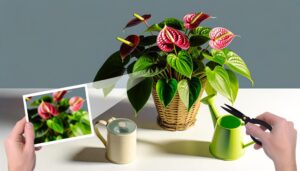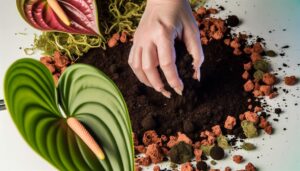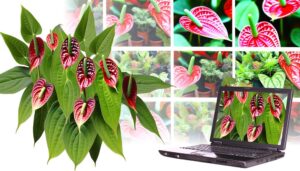Anthurium Soil Mixture in 3 Essential Steps
To create the ideal soil for your anthurium, follow these three essential steps. First, gather ingredients: orchid bark for aeration, peat moss for moisture retention, perlite for structure, charcoal to filter impurities, and sphagnum moss for texture.
Next, mix these components in a large, clean container to ensure uniform distribution. Finally, test and adjust the mix by moistening it and checking the drainage and moisture.
Add more orchid bark for improved drainage or more peat moss for increased moisture retention. With these steps, you’re on your way to achieving the perfect growing medium for your anthurium.

Key Takeaways
- Combine orchid bark, peat moss, perlite, charcoal, and sphagnum moss for an optimal anthurium soil mix.
- Ensure the mix has good aeration and drainage using orchid bark.
- Enhance moisture retention by incorporating peat moss and sphagnum moss.
- Use perlite to improve soil structure and prevent compaction.
- Add charcoal to filter impurities and prevent soil odors.
Step 01: Gather Your Ingredients
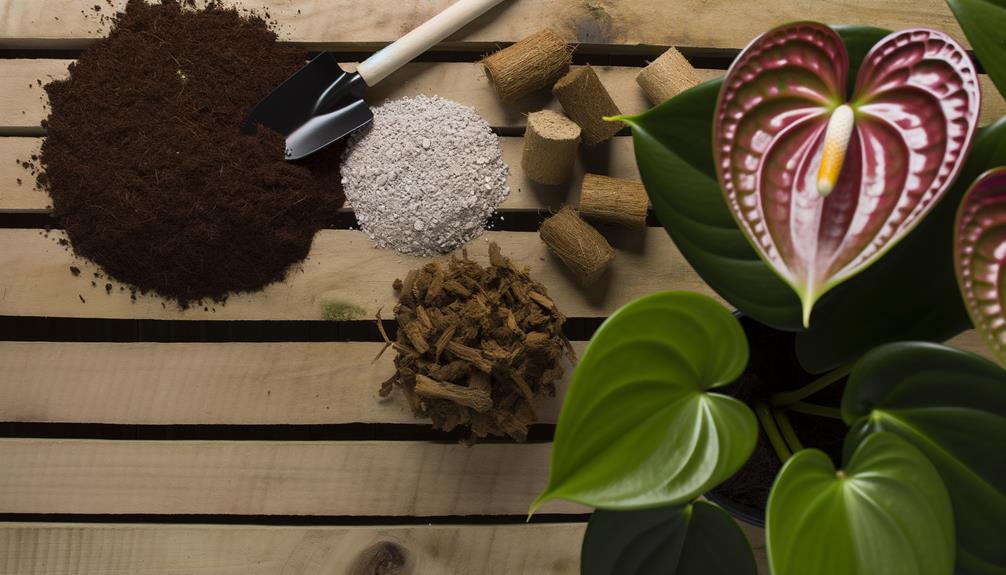
To create the ideal soil mixture for anthuriums, you’ll need to gather several specific ingredients that cater to the plant’s unique requirements.
Start with a high-quality orchid bark, which provides excellent aeration.
Next, add peat moss to retain moisture while also guaranteeing sufficient drainage.
Perlite is essential for improving soil structure and preventing compaction.
Charcoal helps filter impurities, keeping the soil fresh.
Finally, sphagnum moss enhances moisture retention and provides a lightweight texture.
Combining these ingredients will guarantee the soil mimics the anthurium’s natural tropical habitat, promoting healthy root development and vibrant blooms.
Step 02: Mix the Components
Begin by thoroughly mixing the orchid bark, peat moss, perlite, charcoal, and sphagnum moss in a large container to ensure an even distribution of ingredients. Use a large, clean container to facilitate ease of movement and prevent cross-contamination.
Start by adding the orchid bark, which provides essential aeration and drainage. Next, incorporate the peat moss for moisture retention and nutrient content. Add perlite to further enhance drainage and prevent soil compaction. Integrate the charcoal to improve odor and pathogen control, and finally, mix in the sphagnum moss to increase water retention and provide a stable environment for root growth.
Stir the mixture vigorously with a sturdy garden tool to ensure all components are evenly blended, creating an ideal growing medium for your anthuriums.
Step 03: Test and Adjust
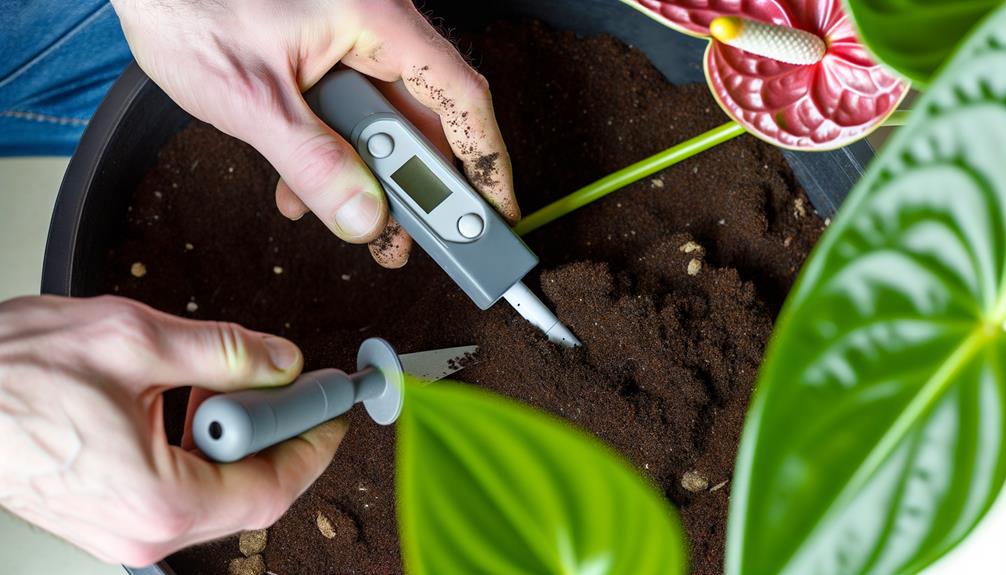
After blending the components, test the soil mixture by moistening a small sample and evaluating its texture, drainage, and moisture retention capabilities. Observe if the mix holds together lightly without clumping or becoming too compact.
Check the drainage by pouring water through the sample and noting how quickly it flows. Anthuriums need well-draining soil to prevent root rot. Make sure the soil retains some moisture without becoming soggy; this balance is essential for healthy roots.
If the mixture drains too quickly or retains too much water, adjust by adding more orchid bark for drainage or peat moss for moisture retention. Repeat testing after each adjustment until the soil exhibits optimal characteristics for Anthuriums.
Conclusion
You’ve now got the know-how to create the perfect anthurium soil mixture in just three essential steps.
Gather your ingredients, mix the components, and test and adjust as needed.
With this hands-on approach, you’re ready to give your anthurium the best chance to thrive.
Remember, practice makes perfect, so don’t be afraid to tweak your mix until you hit the nail on the head.
Happy gardening!


